Download this note (PDF)
Cell culture media are the most common reagents in a culture lab or bioproduction facility. Despite its frequent use, few people pay attention to what happens to the components of the media during its normal storage and use. Vitamins like riboflavin and thiamine are known to be unstable in solution at 2-8°C over long storage periods. These changes are normal and most modern chemically defined media are well formulated to handle the environmental changes under normal usage conditions. Our scientists decided to analyze the stability of media components throughout a normal 10-week laboratory routine. Join us below as we figure out what the normal aging process of cell culture media looks like.
The stability of a liquid cell culture medium depends on various factors that affect storage conditions, such as temperature, light and time. For these media, storage temperatures of 2-8°C and a product specific shelf life are usually specified. Filling, on the other hand, is primarily done in transparent plastic bottles or transparent bags, which do not guarantee exclusion of light. As this is often not explicitly specified for liquid media products, long-term storage without light protection can lead to degradation of solubilized raw materials that are part of the formulation. Vitamins and glutamine are known to have reduced stability in solution even under recommended temperature conditions of 2-8°C.
Since the storage conditions for media can deviate under laboratory routines for certain periods of time, we show an example of a usage cycle that can partially represent these routines. Since cells can be quite temperature-sensitive, media are sometimes first brought to temperature before they are used for cell handling. We tested a freshly bottled medium (1L; CHOlean; recommended for CHO cell lines) stored for a period of 10 weeks. This was stored once a week for 2 hours at either room temperature or 37°C before a sample of approx. 100 mL was taken and measured analytically (see Figure 1).

Figure 1: Graphical representation of the stability testing procedure
Cell culture specific analytical data for pH, osmolality, vitamin, glucose and amino acid concentrations were measured after each sampling and compared to the reference (constant storage at 2-8°C). Since glutamine is a fundamentally unstable substance in the solubilized state when stored at 2-8°C, this amino acid was not supplemented into the tested CHOlean (Xell AG) cell culture medium. The direct addition of glutamine is always recommended before the actual use.
Effect of storage conditions on cell culture media components
The analysis data of the cell culture medium stability showed that most values remain constant over a period of 10 weeks, even if there are temporary deviations in storage. These include in particular the pH value of the carbonate-buffered medium, even accounting for deviations by repeated opening, shaking and warming. Whereas a changing osmolality and turbidity would already indicate a significant change in concentration and was therefore not expected in this stability test.
Amino acids, vitamins, sugars, inorganic salts and trace elements are all components of cell culture medium and can be affected differently by varying storage conditions. Inorganic salts and trace elements do not change in concentration significantly unless they precipitate in the medium. Organic substances can decompose and lose their biological efficacy but still remain in solution. Turbidity measurements by themselves wouldn’t be able to detect changes in different components of the medium.
The cell culture medium stability measurements showed that most vitamins, amino acids and glucose were stable during the 10-week testing period. As expected, known less stable vitamins like thiamine and riboflavin showed degradation and they reduced by 15% and 40% respectively over the 10-week period. The more long-term unstable amine ethanolamine remained stable under all test conditions.
Our cell culture medium stability analyses show only minor deviations for certain vitamins depending on temporary changed storage conditions (at room temperature and 37°C), most cell cultures will not be affected. Of course, each cultivation depends on the needs of each cell line and some of them may be sensitive to slight changes in certain components. But as these two vitamins (riboflavin and thiamine) are generally sensitive vitamins, their concentration may also be reduced in media that have been stored for a longer period of time or media that are not consequently protected from light. But an impact can be determined by an OFAT (one-factor-at-a-time screening) test series or even by adding a defined concentration of these vitamins.
This means that the effect of the storage conditions on the media components tested were small. However, other components need to be considered in a media matrix and they might exhibit additional instabilities. In general, the stability of supplemented raw materials in aqueous solutions must be considered individually, but also in combination with the media matrix (pH dependency, redox behavior, influence of trace elements, etc.).
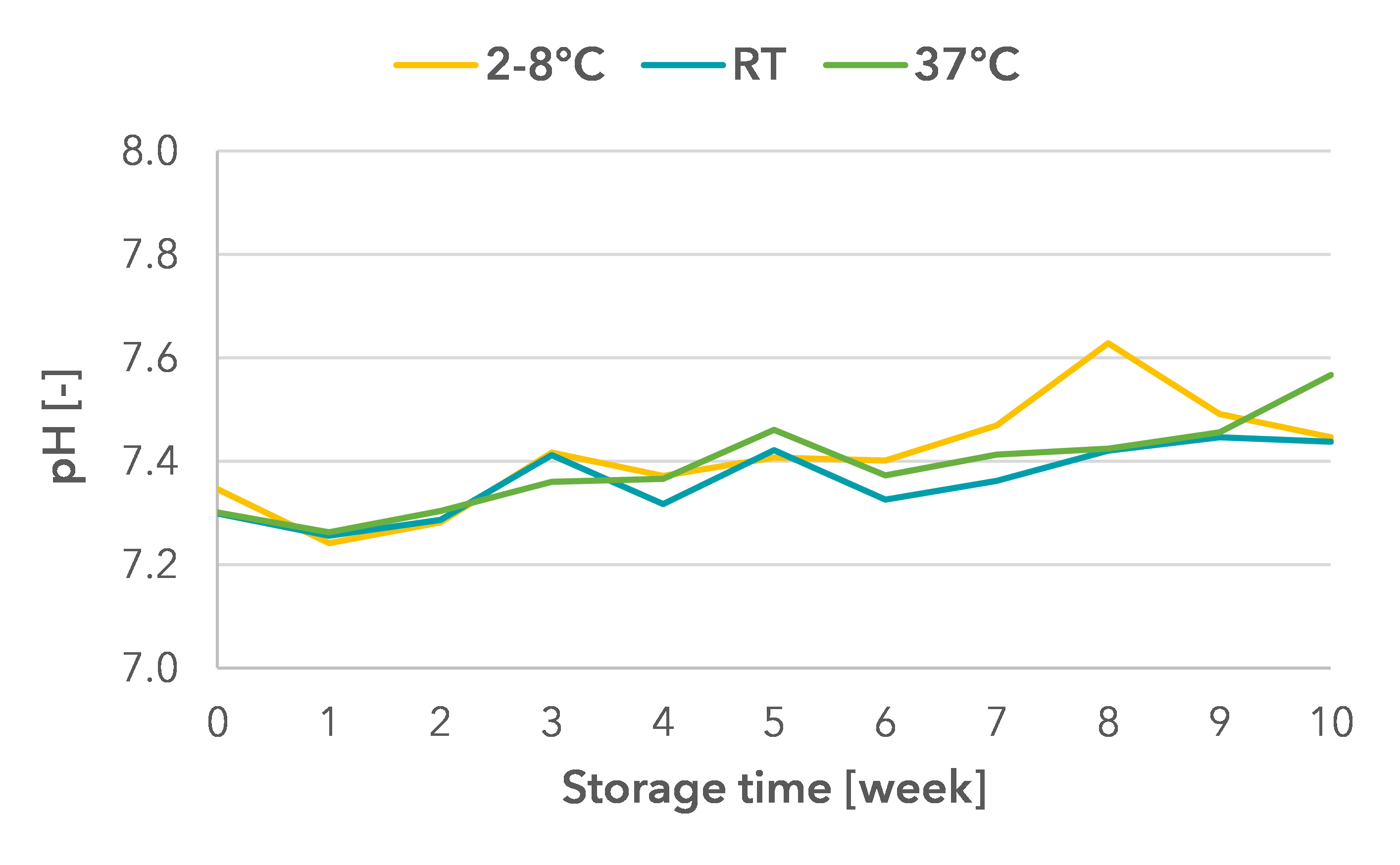
Figure 2: pH values over 10 weeks at temporarily deviating storage conditions (RT = room temperature or 37°C) compared to the recommended storage at 2-8°C
pH variations of media held at various temporary storage conditions (room temperature or 37°C) (see Figure 2) were similar across the various temperatures when compared to the recommended storage temperature of 2-8°C over the 10-week test period.
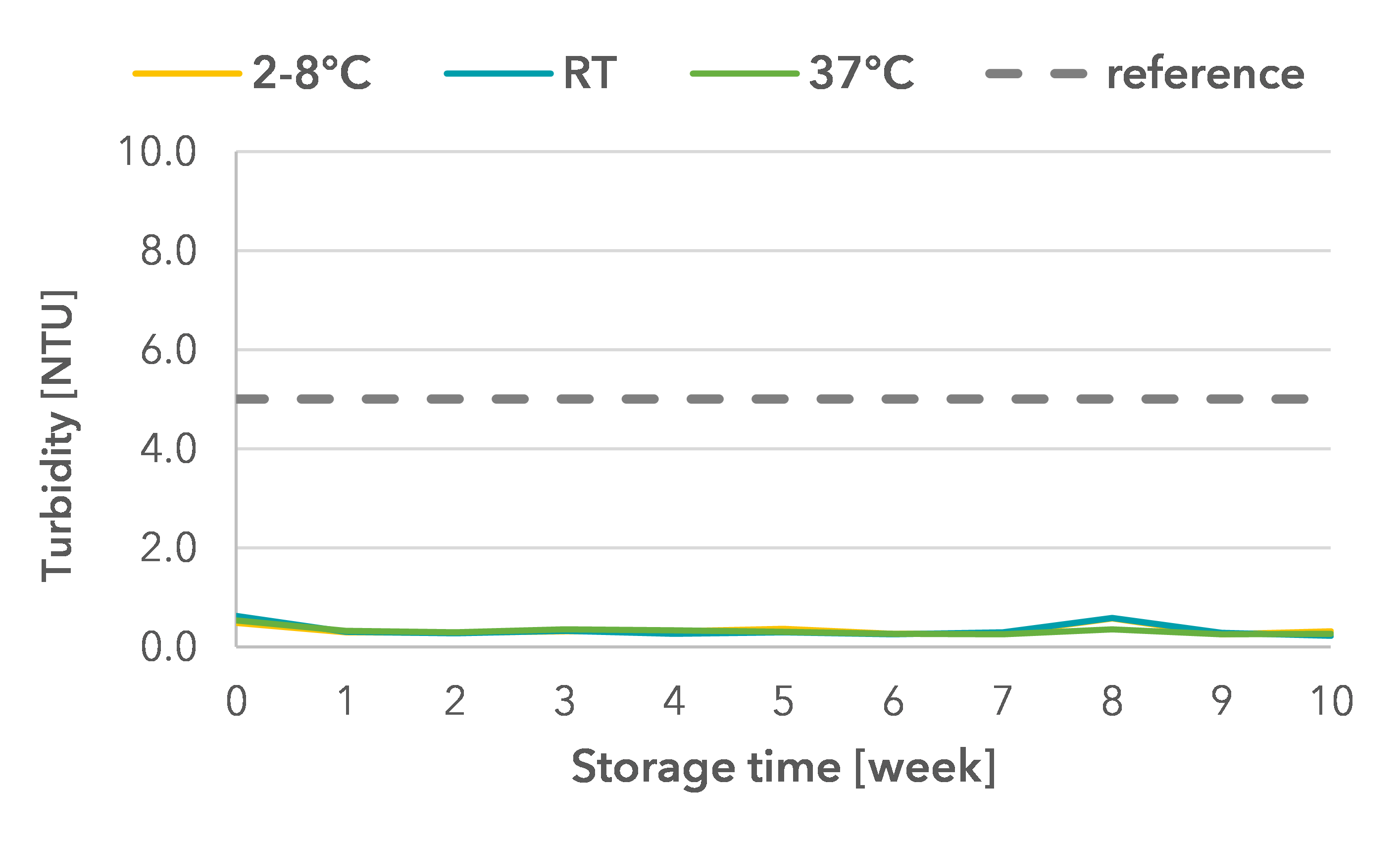
Figure 3: Turbidity over 10 weeks at temporarily deviating storage conditions (RT = room temperature or 37°C) compared to the recommended storage at 2-8°C, as an indicator for precipitation of raw materials and contamination. The dashed reference line indicates the maximum permitted value of 5 NTU for drinking water.
There were no significant differences in turbidimetric measurements of media held at various temporary storage conditions (room temperature or 37°C) (see Figure 3). They were similar across the various temperatures when compared to the recommended storage temperature of 2-8°C over the 10-week test period.
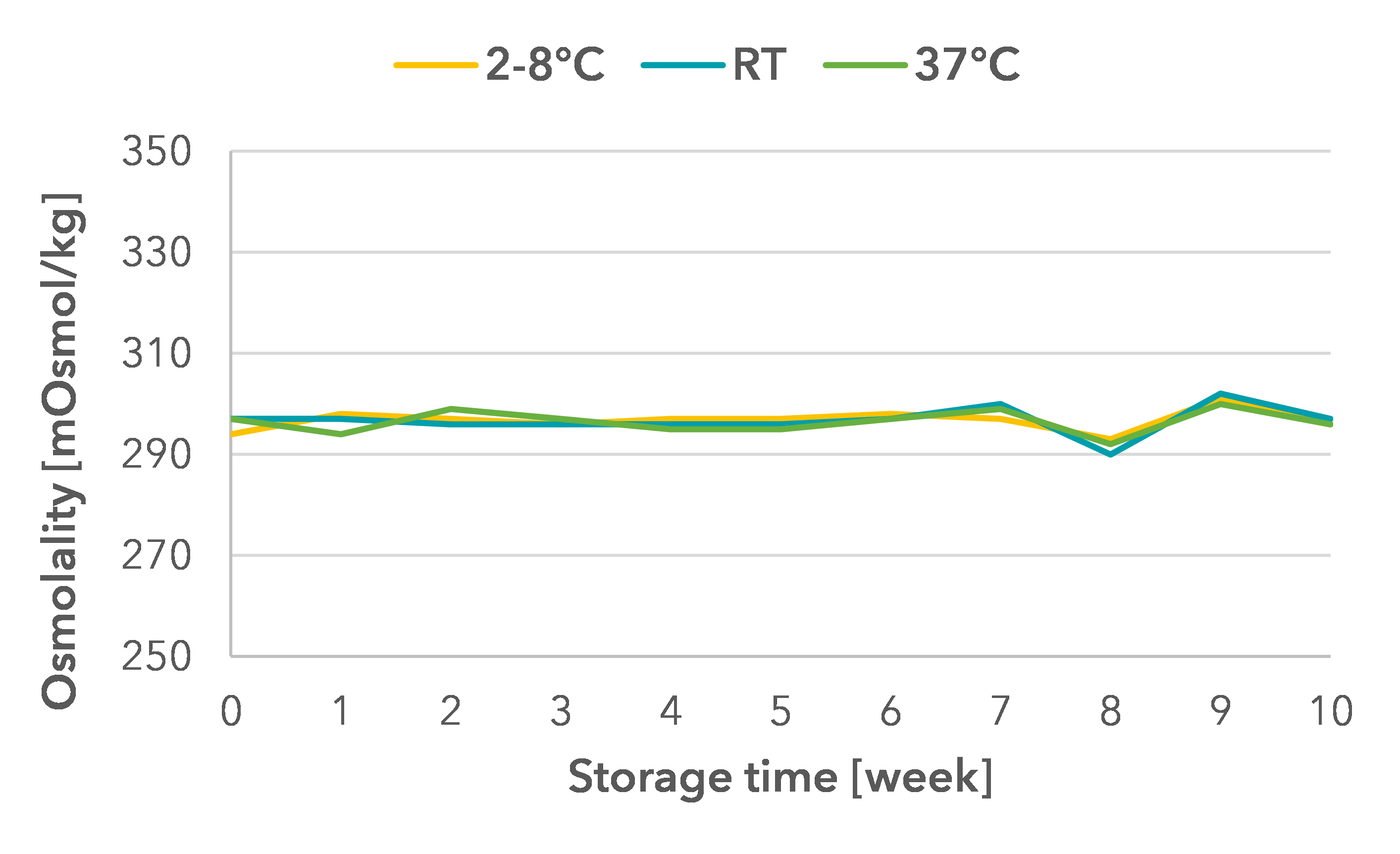
Figure 4: Osmolality over 10 weeks at temporarily deviating storage conditions (RT = room temperature or 37°C) compared to the recommended storage at 2-8°C, as an indicator for precipitation and raw material degradation.
Osmolality measurements of media did not differ significantly regardless of whether they were held at temporary storage conditions (room temperature or 37°C) (see Figure 4) or were kept at the recommended storage temperature of 2-8°C over the 10-week test period.
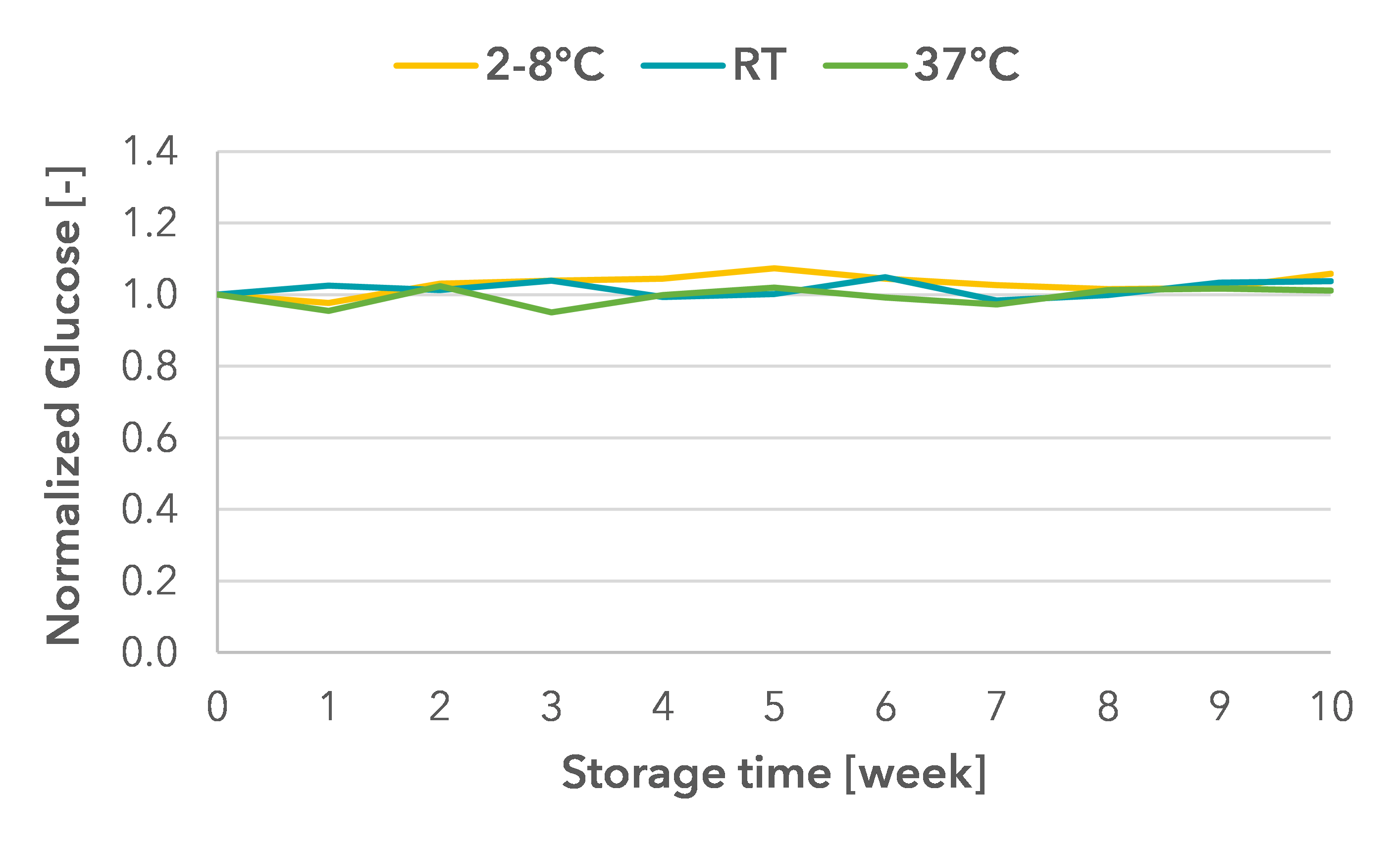
Figure 5: Normalized glucose data over 10 weeks at temporarily deviating storage conditions (RT = room temperature or 37°C) compared to the recommended storage at 2-8°C.
There were no significant differences in glucose measurements of media at the end of the test period regardless of whether they were held at temporary storage conditions (room temperature or 37°C) (see Figure 5) or were at the recommended storage temperature of 2-8°C over the 10-week test period.
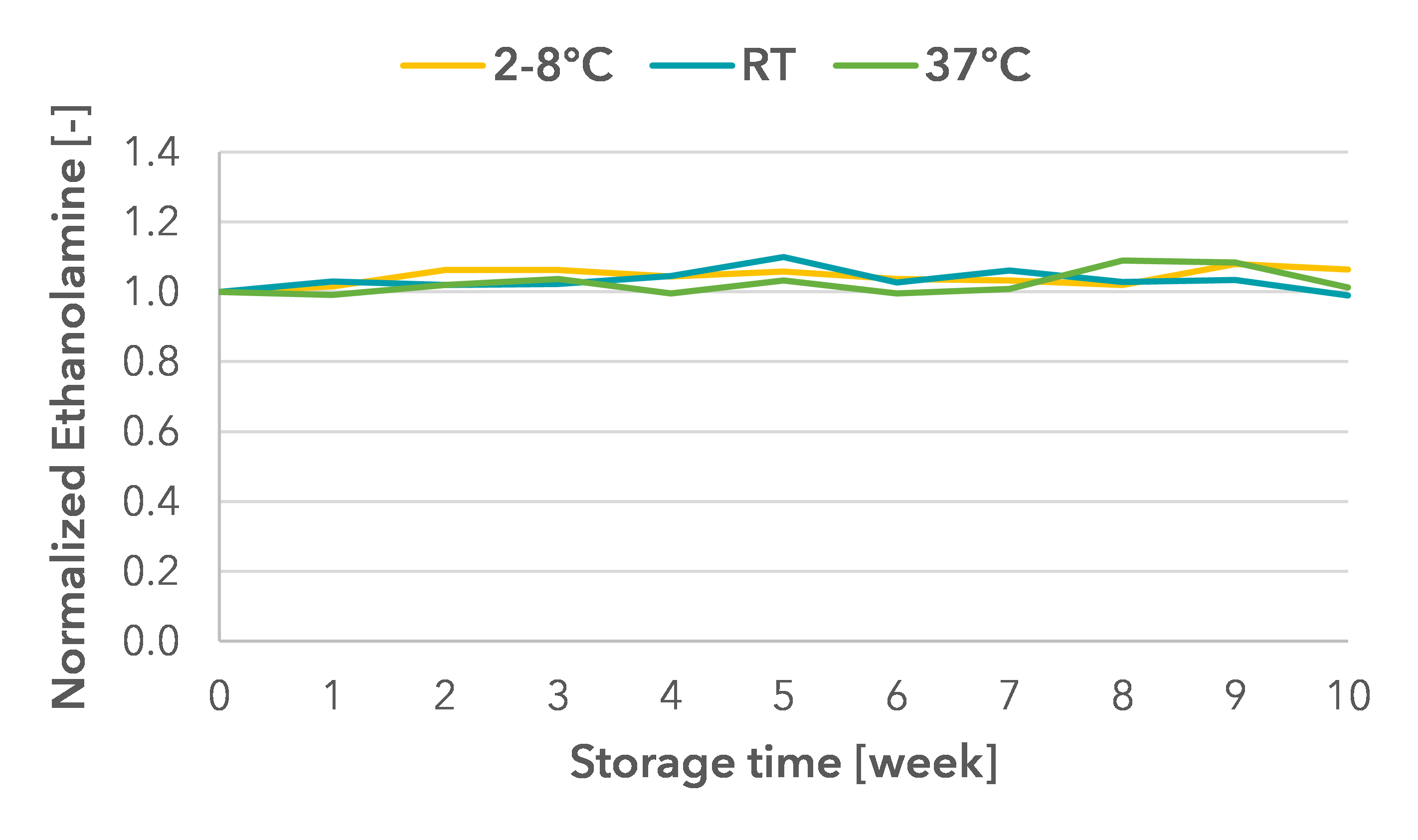
Figure 6: Normalized ethanolamine data over 10 weeks at temporarily deviating storage conditions (RT = room temperature or 37°C) compared to the recommended storage at 2-8°C, as an example for known less stable components.
Ethanloamine was stable in media held at temporary storage conditions (room temperature or 37°C) (see Figure 6) or at the recommended storage temperature of 2-8°C over the 10-week test period.
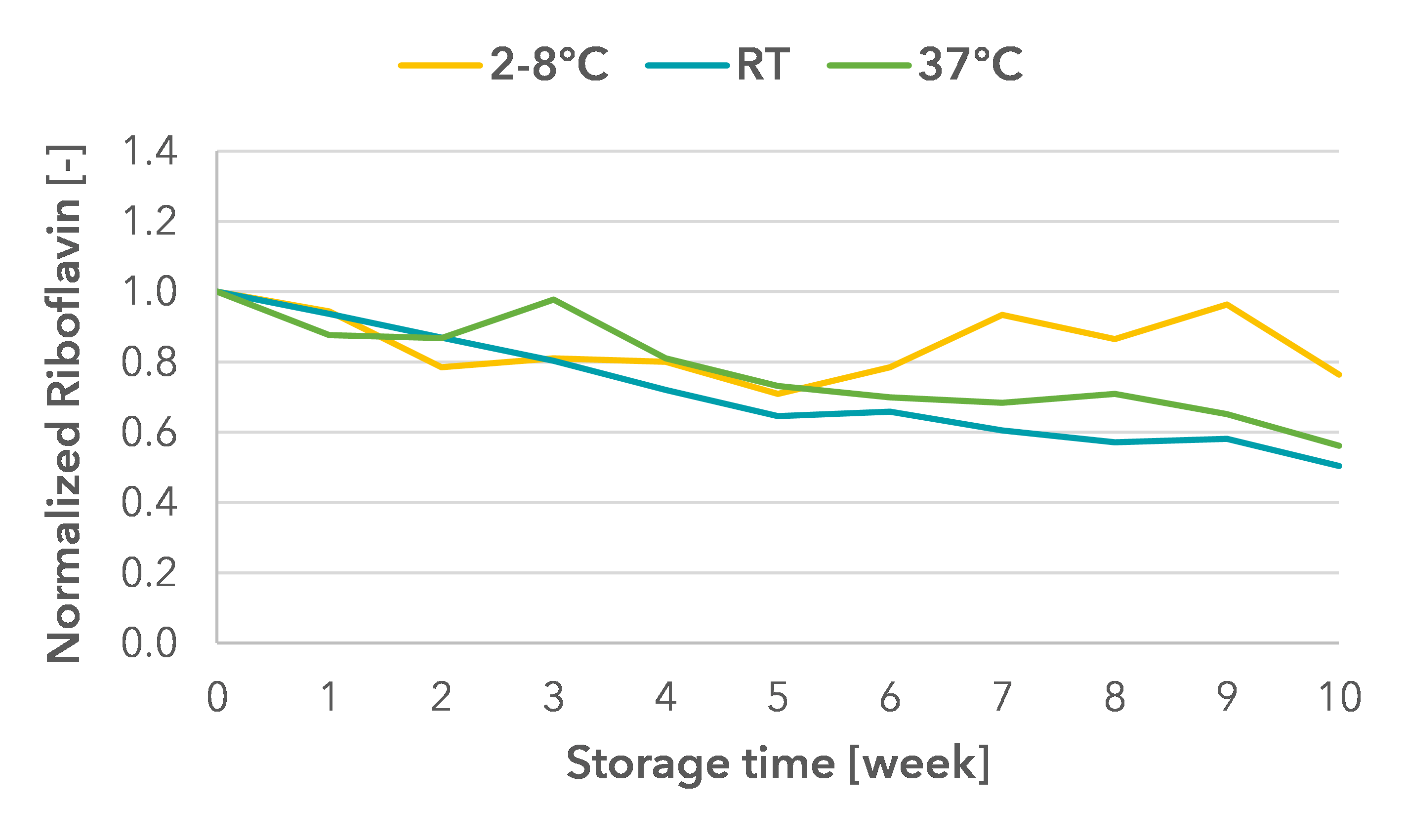
Figure 7: Normalized riboflavin data over 10 weeks at temporarily deviating storage conditions (RT = room temperature or 37°C) compared to the recommended storage at 2-8°C, as an example for a known less stable vitamin.
Riboflavin is a less stable vitamin, and media held at all three temperatures 2-8°C, 37°C and room temperature showed loss of riboflavin due to degradation. Of these the media stored at 37°C and room temperature showed the most degradation of ~ 40% over the 10-week test period.
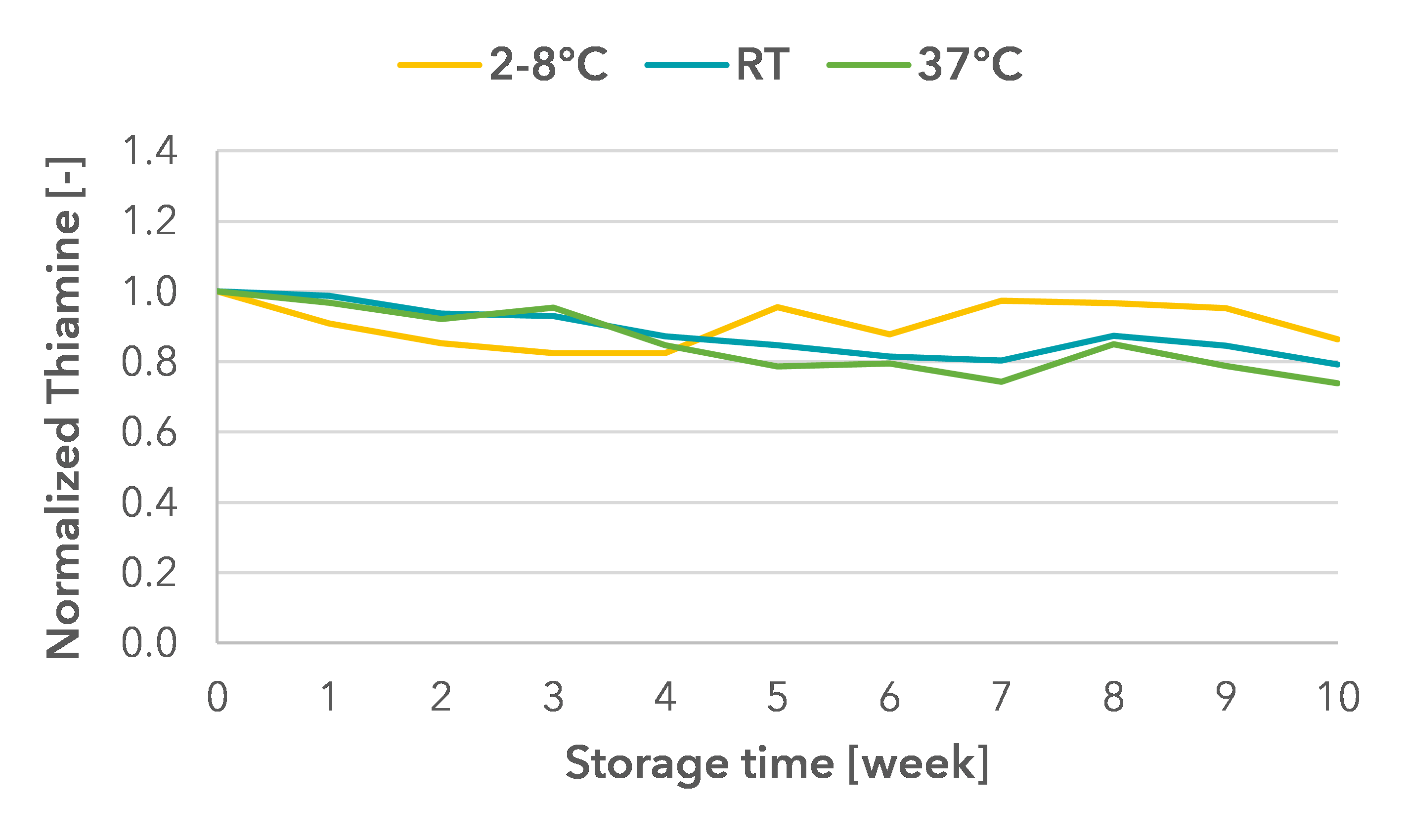
Figure 8: Normalized thiamine data over 10 weeks at temporarily deviating storage conditions (RT = room temperature or 37°C) compared to the recommended storage at 2-8°C, as an example for a known less stable vitamin.
Thiamine is a less stable vitamin, and media held at all three temperatures 2-8°C, 37°C and room temperature showed loss of thiamine due to degradation. Close to 15% degradation was seen in media stored at 37°C and room temperature over the 10-week test period.
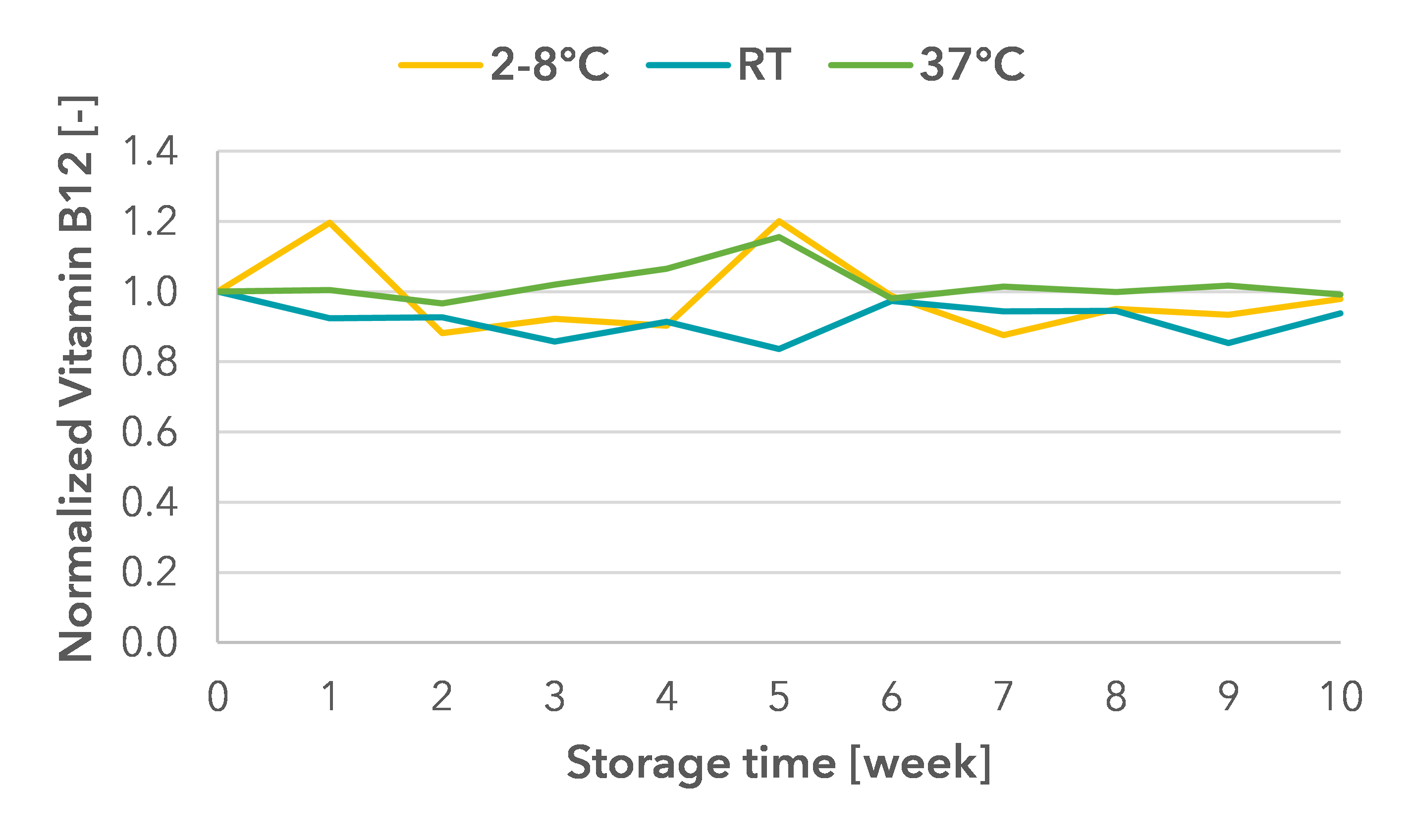
Figure 9: Normalized vitamin B12 (cyanocobalamin) data over 10 weeks at temporarily deviating storage conditions (RT = room temperature or 37°C) compared to the recommended storage at 2-8°C, as an example for a stable vitamin.
Vitamin B12 was stable in media held at temporary storage conditions (room temperature or 37°C) (see Figure 9) or at the recommended storage temperature of 2-8°C over the 10-week test period.
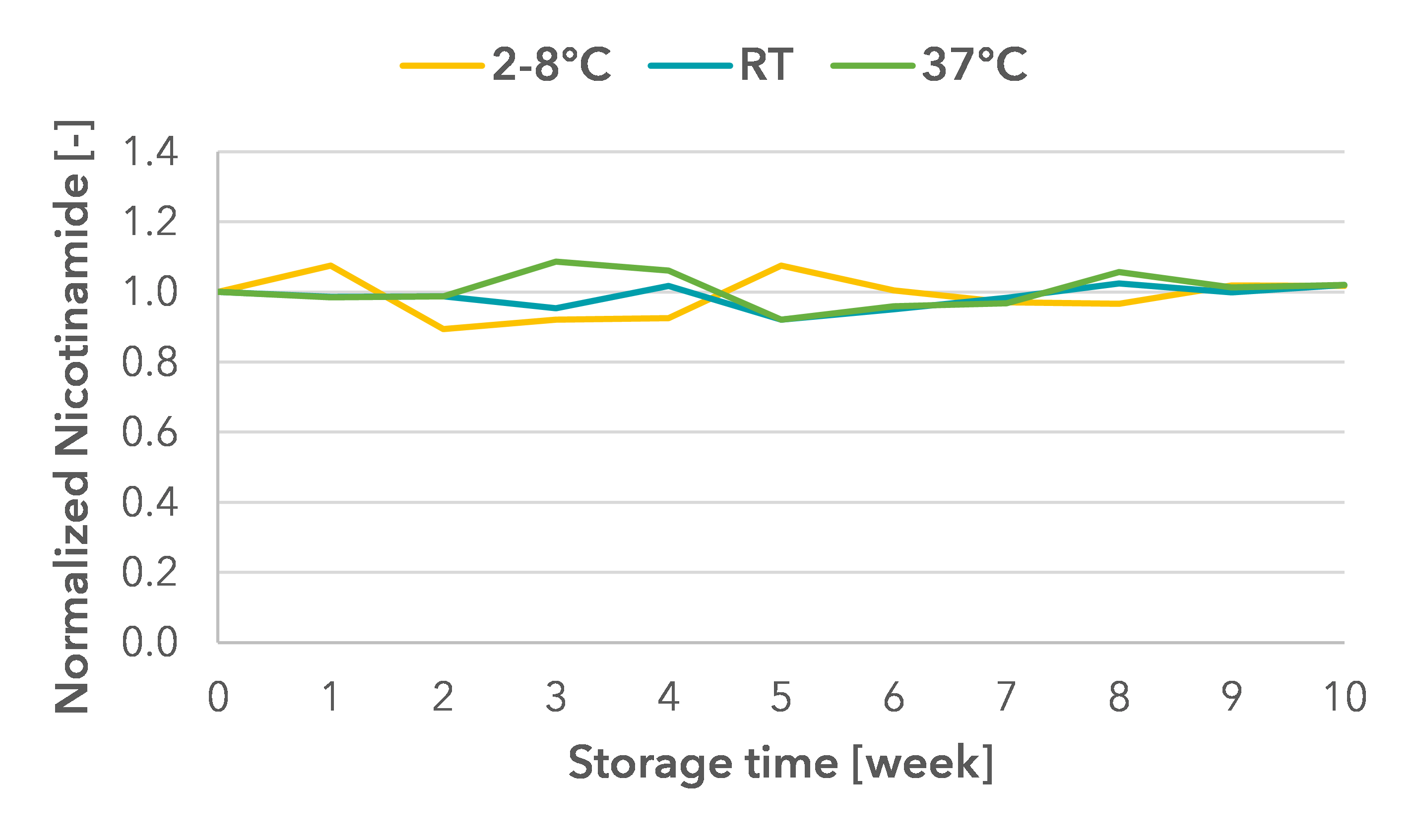
Figure 10: Normalized nicotinamide data over 10 weeks at temporarily deviating storage conditions (RT = room temperature or 37°C) compared to the recommended storage at 2-8°C, as an example for a stable vitamin.
Despite minor deviations through the test period there were no significant differences in nicotinamide at the end of the test period regardless of the storage condition (room temperature, 37°C or 2-8°C) (see Figure 10) over the 10-week test period.
Cell culture medium stability analysis available at Xell
Curious to find out how your routine handling is impacting your cell culture media? Just contact us, we will gladly support you in figuring out. As part of our analytical services for customers we have established fast and robust methods for measuring the concentrations of cell culture media components.
If you liked this technical note, you might also like our tech notes on spent media analysis, trace element detection or other cell culture related topics.






